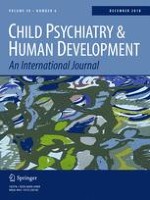05-06-2018 | Original Article
Factors Associated with Parent–Child Discrepancies in Reports of Mental Health Disorders in Young Children
Gepubliceerd in: Child Psychiatry & Human Development | Uitgave 6/2018
Log in om toegang te krijgenAbstract
The study compares parent and child reports of child mental health to determine the relationship between parent–child disagreement and parental psychological and attitudinal factors, and to determine how parent–child disagreement is associated with the use of specialized services. A cross-sectional study was conducted with 1268 children aged 6–11 years using the Dominic Interactive and the Strengths and Difficulties Questionnaire. Psychological distress and negative parental attitudes were associated with greater reporting of mental health problems, leading to greater parent-child agreement on symptom presence, and to parental over-reporting of symptoms. Parent/child agreement was associated with 43.83% of contact with a mental health provider for externalizing and 33.73% for internalizing problems. The contribution of key parental psychological and attitudinal factors in parent–child disagreement on child mental health status may prove helpful in improving the identification of children in need of specialized services.
